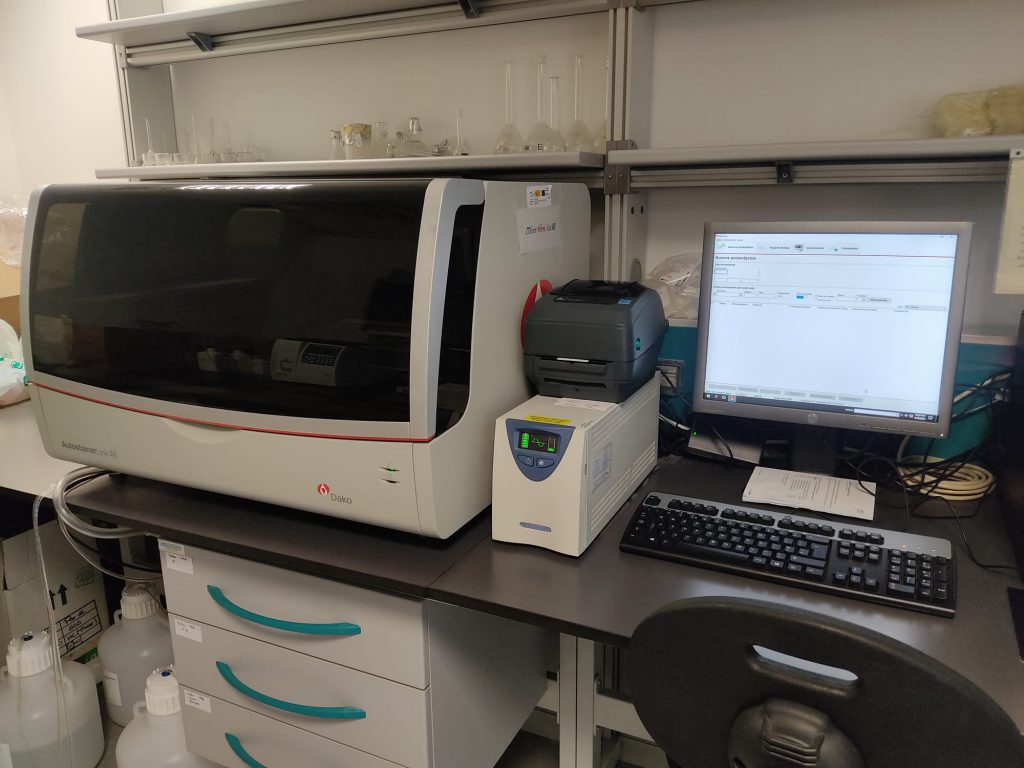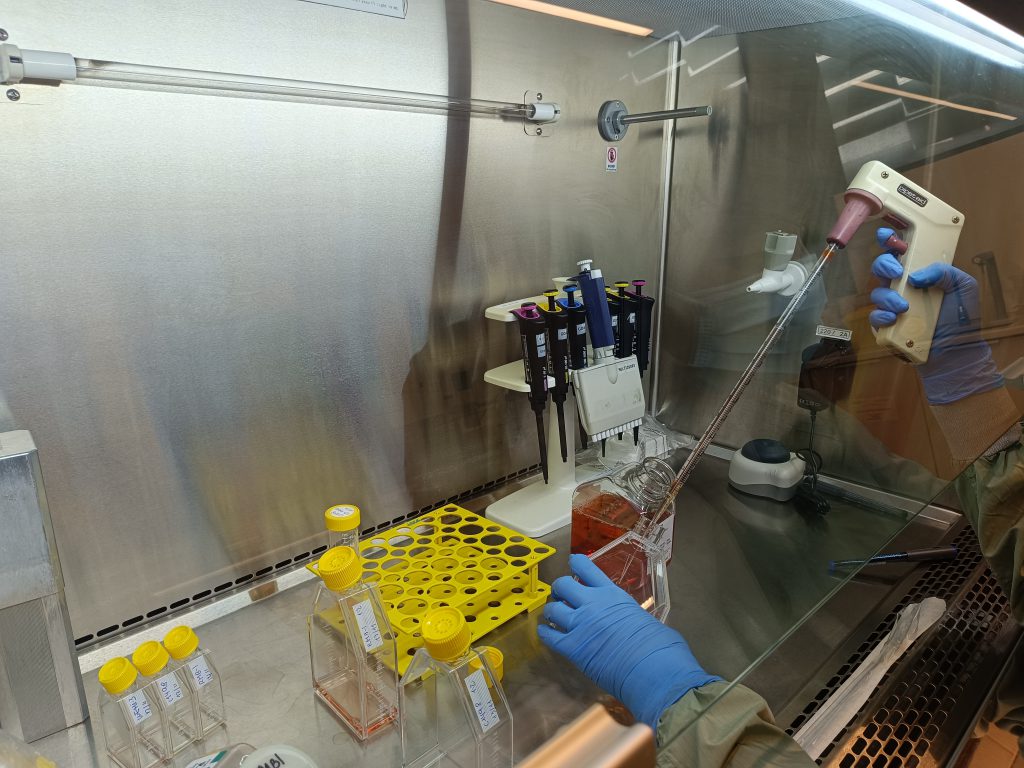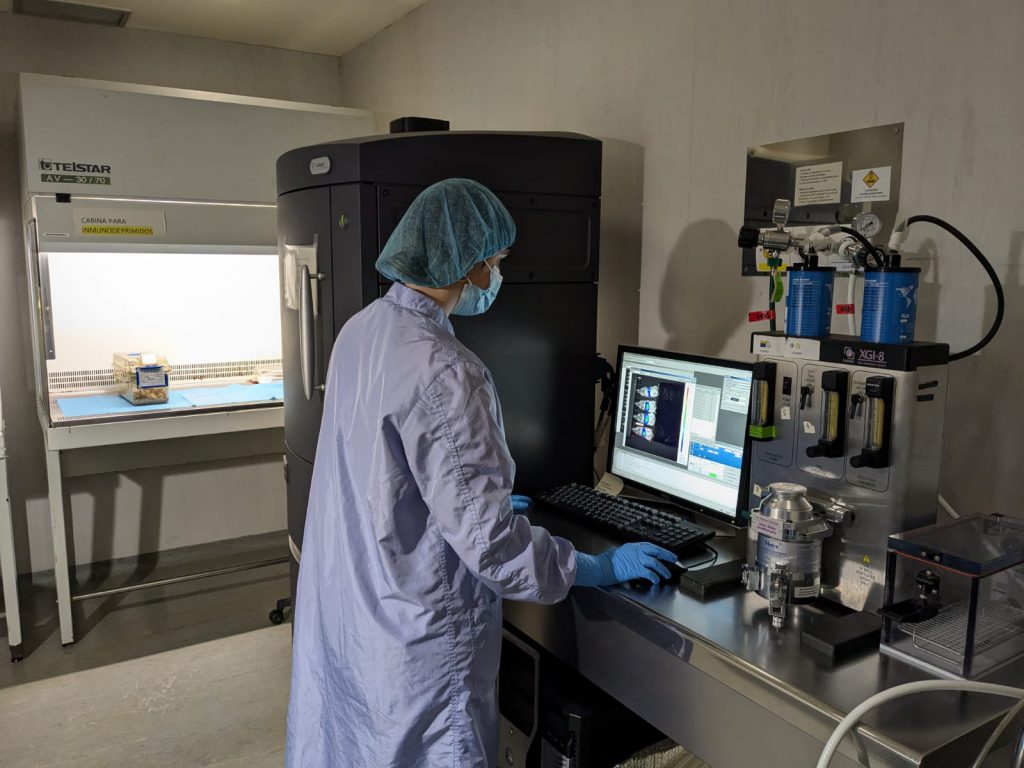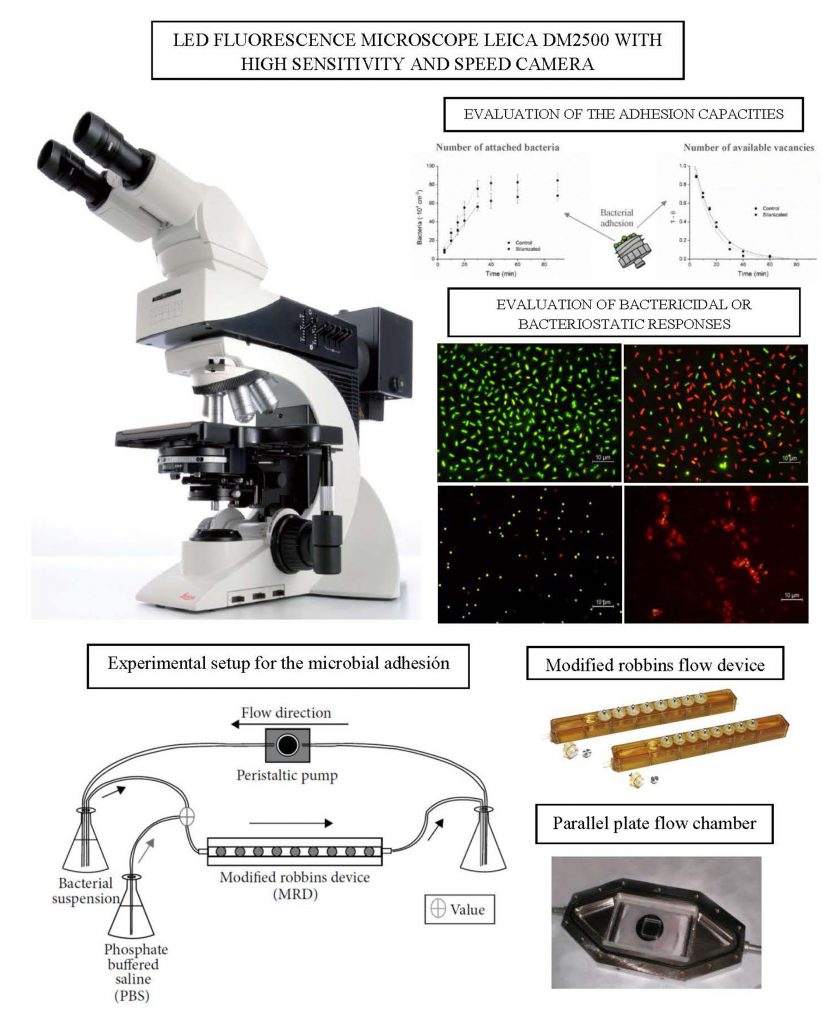U18-S05. Histological analyses
Histological analyses
The aim of this service is to evaluate the toxicity or antitumor activity of nanoparticles and drug-loaded nanoparticles in normal or tumor tissues provided by the customer or obtained in the in vivo assays performed in the unit. The histological analyses that we offer include hematoxylin&eosin staining to evaluate the toxicity in normal tissues and also the mitotic index or cell death present in tumor tissues. We also offer DAPI staining of tissue samples to evaluate apoptosis induction by compounds. Moreover, we also offer the study of the expression of different markers by Immunohistochemistry. Thus, we offer the evaluation of different cell death (PARP, Caspases, …) or proliferation (Ki67, Cyclins,…) markers. We can also offer the possibility to set up the evaluation of new markers of interest by the costumer.
Customer benefits
The costumer will benefit from the experience of the researchers involved in the service performing histological analyses of normal and tumor tissues. The service has also high expertise in immunohistochemistry staining and offers the possibility of setting up new antibodies that can be of interest for the costumer.
Target customer
The offered service can be of interest to research groups of academia or companies willing to study the histology of normal or tumor tissue samples.

References
- Martínez-Torró C, Alba-Castellón L, Carrasco-Díaz LM, Serna N, Imedio L, Gallardo A, Casanova I, Unzueta U, Vázquez E, Mangues R, Villaverde A. Lymphocyte infiltration and antitumoral effect promoted by cytotoxic inflammatory proteins formulated as self-assembling, protein-only nanoparticles. Biomed Pharmacother. 2023 Aug;164:114976. doi: 10.1016/j.biopha.2023.114976.
- Falgàs A, Garcia-León A, Núñez Y, Serna N, Sánchez-Garcia L, Unzueta U, Voltà-Durán E, Aragó M, Álamo P, Alba-Castellón L, Sierra J, Gallardo A, Villaverde A, Vázquez E, Mangues R, Casanova I. A diphtheria toxin-based nanoparticle achieves specific cytotoxic effect on CXCR4+ lymphoma cells without toxicity in immunocompromised and immunocompetent mice. Biomed Pharmacother. 2022 Jun;150:112940. doi: 10.1016/j.biopha.2022.112940.
- -Medina-Gutiérrez E, García-León A, Gallardo A, Álamo P, Alba-Castellón L, Unzueta U, Villaverde A, Vázquez E, Casanova I, Mangues R. Potent Anticancer Activity of CXCR4-Targeted Nanostructured Toxins in Aggressive Endometrial Cancer Models. Cancers (Basel). 2022 Dec 23;15(1):85. doi: 10.3390/cancers15010085.
- Sala R, Rioja-Blanco E, Serna N, Sánchez-García L, Álamo P, Alba-Castellón L, Casanova I, López-Pousa A, Unzueta U, Céspedes MV, Vázquez E, Villaverde A, Mangues R. GSDMD-dependent pyroptotic induction by a multivalent CXCR4-targeted nanotoxin blocks colorectal cancer metastases. Drug Deliv. 2022 Dec;29(1):1384-1397. doi: 10.1080/10717544.2022.2069302.
- Pallarès V, Unzueta U, Falgàs A, Aviñó A, Núñez Y, García-León A, Sánchez-García L, Serna N, Gallardo A, Alba-Castellón L, Álamo P, Sierra J, Cedó L, Eritja R, Villaverde A, Vázquez E, Casanova I, Mangues R. A multivalent Ara-C-prodrug nanoconjugate achieves selective ablation of leukemic cells in an acute myeloid leukemia mouse model. Biomaterials. 2022 Jan;280:121258. doi: 10.1016/j.biomaterials.2021.121258.











